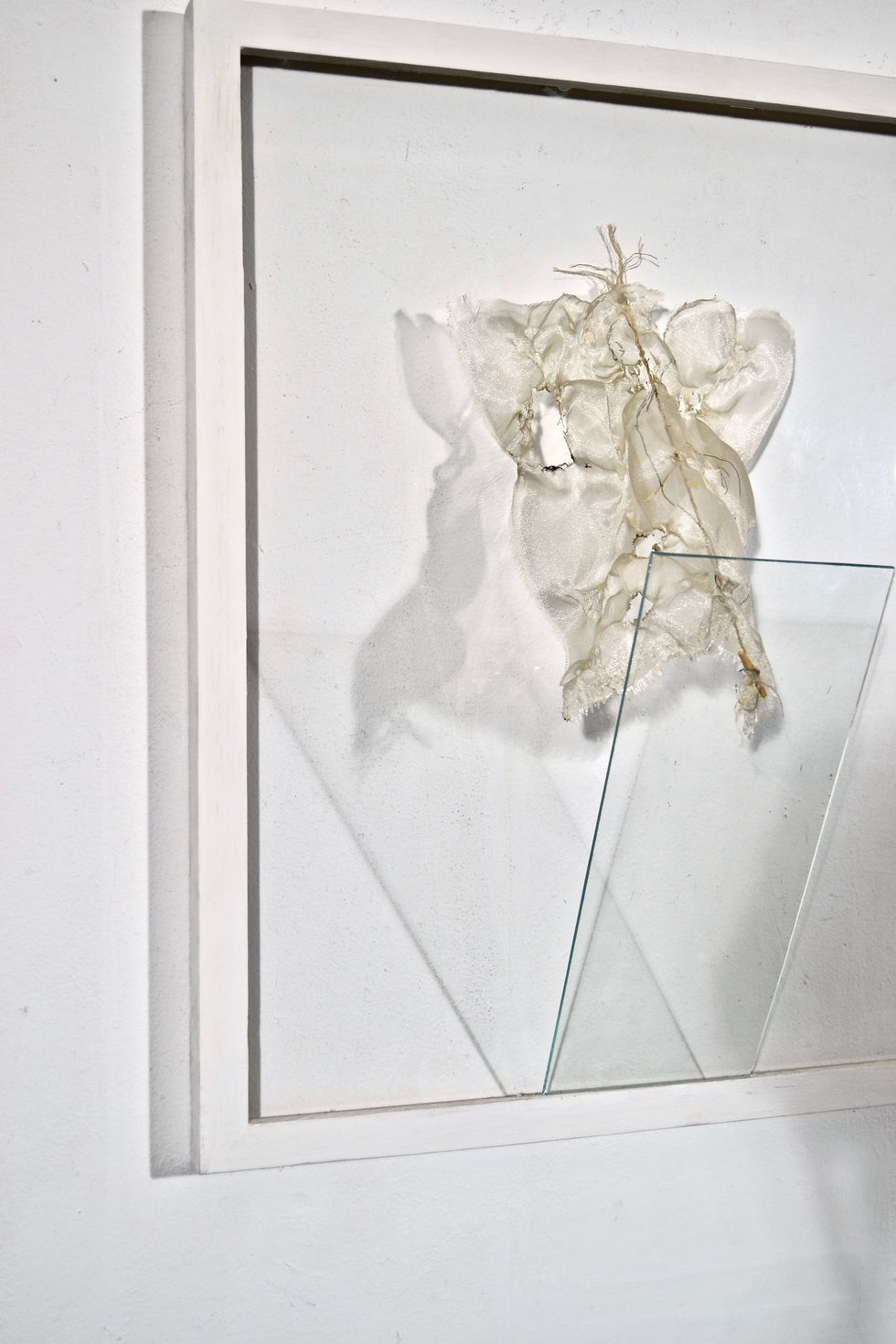Christian de Boschnek
Recent works
Glass, as the support, is one constant in the practice of Chris De Boschnek. Light and shadow, activated as a kind of painting and drawing, are another. It is not surprising, then, that fragility and ephemerality are never far from the artist’s mind, and it is that precarity that you notice first in his almost sacramental creations. Glass, of course, can be easily shattered (although there are formulations of it that surpass steel in strength), its transparency further contributing to the image of (paradoxical) insubstantiality and frangibility that De Boschnek seeks to capture. He said that glass was “an obvious choice since it is already perceived as fragile.” And in choosing it as the ground for his elliptical imagery, he casts his tableaux into a place of uncertainty, their guise shifting with the changes in the ambient light.
More poetic than epic or polemical, although his themes are about the Earth, the environment, and mortality, they correspond in spirit to William Blake’s socio-visionary art, for instance, as well as to Joseph Cornell’s wondrous fantasies. Like them, De Boschnek’s glass works are scaled for intimacy, distilling whole worlds through the alembic of the imagination. Each element in his compositions is selected with meticulous care, their number limited to concentrate their force. Materials that appear with regularity are oil paints, emulsions, ink, sometimes the merest splash, thread, rope, matchsticks, mylar, while others make guest appearances such as twigs, stems, a dried milkweed pod, a tiny pencil stub, whatever strikes his fancy as relevant to the project at hand, working more intuitively than otherwise. They are usually presented on a custom-made shelf, the glass angled and surrounded by a frame, both white, the installation unobtrusive. He does use color, often earth tones, his works reticent, but memorable. One of De Boschnek’s strengths is his deftness at placing odd, dissonant materials together in unexpected ways, establishing a connection between them, one that is not fixed, to be parsed subjectively.
Several of the works in this show are brand new, including Evolution/Devolution (2024). A glowing, amber-colored puddle is the heart of this composition, its surface finely crackled, pinned with a jaunty bone-white swirl of unrecyclable plastic, as if trapped by a primordial version of a time capsule reloaded with current detritus. Ra (2024) is another new work, the colors similarly warm, with the addition of a crumpled square of gold leaf. It rests on a burnt orange-ish smear, connected to a dark honey-hued rectangle by a trio of fine lines, with shadows subtly in play. The title refers to the Egyptian sun god who lights the world and sees all, another allegory about our willful, sloppy destruction of our own habitat. These delicate, hand-made, disingenuously beguiling works hint at darker matters, it turns out. It might take a bit of time to realize that they function as reliquaries of sorts, as memento mori, culled from De Boschnek’s existential musings about a world out of balance, about the remains of our days, and our compromised future.
Lilly Wei
September 2024

























